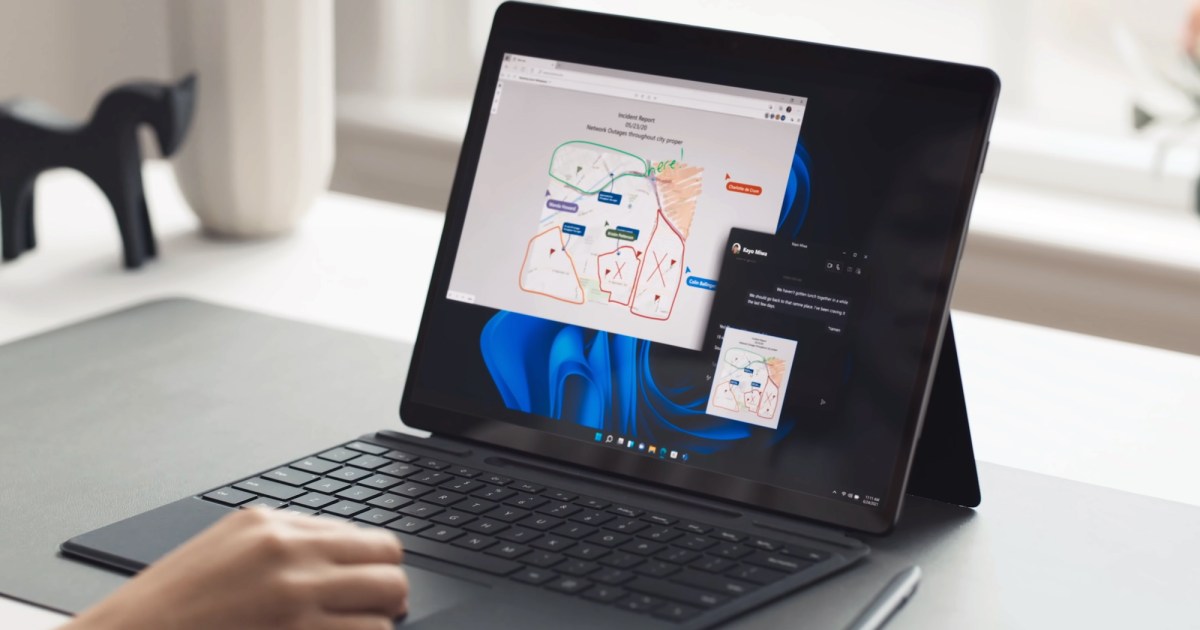Microsoft
Windows 11 has been around for quite a while now. The operating system isn’t as new as when it first came out in 2021, but many people are still updating it for the first time from Windows 10. Whether you’re new to Windows 11 or have been using it since launch, there are a few things that you might want to tweak to get a better experience. Microsoft doesn’t have all these settings upfront, but we’re here to surface them for you.
Move the Taskbar and Start Menu to the left
One of the biggest differences between Windows 10 and Windows 11 is the location of the Taskbar and Start Menu. On Windows 10, the Taskbar and Start Menu are positioned to the left of the screen. Windows 11, though, changes that by moving both to the center. If this annoys you, then you can easily change it back.
Just hit Windows Key + I to open up the Settings app. Then, choose Personalization and Taskbar. From there, choose Taskbar behaviors and click Left under Taskbar alignment. This should make Windows 11 feel a bit more like Windows 10.
Hide Recommended files in favor of the suggested apps

Another core Windows 11 feature is the Recommended section, which is powered by Microsoft 365. A lot of people don’t like this, however, and opt to turn it off. Here’s how to do it.
First, hit Windows Key + I on your keyboard, then click Personalization followed by Start. Toggle the switch for Show recently added apps to on and the switches for Show recently opened items in Start, Jump Lists, and File Explorer to off. Keep in mind that if you opt to do this, you’ll no longer see file recommendations in File Explorer, as this setting is universal across Windows 11.
Turn off Widgets and Copilot

If you don’t find either Widgets or Copilot useful, you can disable them.
First, hit the Windows Key + I on your keyboard, then choose Personalization. From there, choose Taskbar and look for Show or hide buttons that appear on the taskbar. You can then toggle the switches for Widgets or Copilot to off.
Change the way the touch keyboard looks

You can customize the touch keyboard to look and feel the way you want in Windows 11.
To do this, choose Windows Key + I on your keyboard, then click Personalization, followed by Text input. From here, you can choose various themes, keyboard sizes, and more.
Try the new keyboard shortcuts

Windows 11 has a new set of keyboard shortcuts to help you save time during your busy day. These cover things such as Widgets, the chat app, quick settings, notification center, Snap Layouts, and more. Here are some of them:
- ⊞ Win + W – Open the Widgets Pane.
- ⊞ Win + A – Open Quick Settings for Wi-Fi, Brightness, etc.
- ⊞ Win + N – Open Notification Center.
- ⊞ Win + Z – Open Snap Layouts.
- ⊞ Win + C – Open Copilot.
Type with your voice in Windows 11 or try live captions

One of the cool accessibility features in Windows 11 is the voice-typing feature. Hit the Windows Key + H on your keyboard when you’re in a text box and start turning your voice into words.
While not related to typing with your voice, you can also try out live captions. Whenever a video is playing, you’ll get a readout of what’s happening on the screen.
Bring back the legacy right-click menus

Windows 11 brings a new, more simplified right-click menu. If you’re a power user, though, you might want to bring back the legacy right-click menu that’s hidden under Show more options.
Show the desktop by shaking the title bar

As part of Windows 11’s multitasking features, you can grab the title bar of any open window or app and shake it with the mouse to show the desktop.
Although we looked at eight hidden settings you need to try in Windows 11, there’s still much more you can do. Windows 11 gets “featured drops,” bringing nifty new tricks to the operating system. We’ll keep this guide updated with more tricks as we find them.


